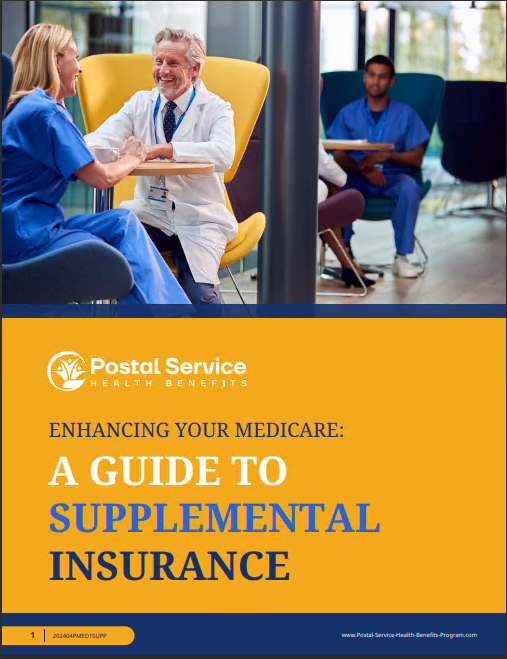Key Takeaways
- The 2025 health benefits overhaul for USPS workers introduces the Postal Service Health Benefits (PSHB) Program, offering tailored options for employees and retirees.
- Understanding Medicare integration and making informed choices during Open Season will help you secure the best coverage for your needs.
A Fresh Start for USPS Health Coverage
Major changes are on the horizon for USPS employees and retirees as the Postal Service Health Benefits (PSHB) Program takes center stage in 2025. If you’re part of the USPS family, it’s crucial to understand how this transition impacts your health coverage and what steps you need to take to prepare. This is your guide to navigating the changes with confidence.
The overhaul is significant and aims to streamline benefits, ensuring they align with the unique challenges USPS workers face. With better-defined options and more accessible tools for choosing coverage, the transition is designed to make managing your health plan less daunting. USPS’s shift to PSHB not only reflects operational changes but also signals a long-term commitment to offering comprehensive health support for employees.
What’s Behind the Transition?
The PSHB Program replaces the Federal Employees Health Benefits (FEHB) system for postal workers starting January 1, 2025. This new program aims to address the specific needs of USPS employees and retirees while aligning with broader Postal Service reform efforts. It’s not just about cost efficiency—it’s about creating a system tailored to your unique requirements.
At its core, the transition stems from years of deliberation to improve how USPS meets the medical needs of its workforce. Unlike its predecessor, PSHB will hone in on services that matter most to postal employees, offering specialized care networks, plan options, and Medicare integration that directly respond to feedback from the USPS community.
Key Dates You Can’t Miss
- Open Season: Mark your calendar for November 11 to December 9, 2024. This is your window to review, modify, or confirm your health plan under PSHB.
- Effective Date: Any changes you make during Open Season will go live on January 1, 2025.
- Medicare Enrollment Deadline: If you’re Medicare-eligible, ensure you’re enrolled in Part B by this date to maintain PSHB coverage (exceptions apply for certain retirees).
These dates aren’t just deadlines; they’re your opportunities to take charge of your health coverage. Treat them as pivotal points in your planning process to avoid any last-minute complications.
Automatic Enrollment: The Safety Net
If you’re currently enrolled in FEHB, you’ll automatically transition to a comparable PSHB plan. While this ensures continuous coverage, don’t settle for the default option without reviewing your alternatives. Open Season is your chance to explore plans and select one that truly fits your needs.
Automatic enrollment might seem convenient, but it’s not foolproof. Changes in premium costs, deductibles, and benefits mean that reviewing your plan during Open Season is critical. Ensure the plan you transition to aligns with your healthcare priorities and financial goals.
Medicare Part B: A Game-Changer
For many Medicare-eligible annuitants and family members, enrolling in Medicare Part B will be a requirement to keep PSHB coverage. Here’s how it works:
- Primary Coverage: Medicare Part B becomes your primary insurer for outpatient services, reducing your out-of-pocket expenses.
- Secondary Role: PSHB plans then cover costs not handled by Medicare, offering a comprehensive safety net.
If you’re exempt from this requirement (e.g., retired before January 1, 2025), you won’t need to enroll in Part B. However, for most beneficiaries, this integration can be a cost-effective solution, despite the additional Part B premium.
Medicare’s role in PSHB is transformative, offering a layer of predictability to healthcare expenses. By sharing costs between Medicare and PSHB, beneficiaries can enjoy expanded coverage without the fear of significant gaps in their benefits.
What’s Changing with PSHB?
Focused Coverage for Postal Workers
PSHB narrows its focus to USPS employees and their families, providing benefits tailored to your unique needs. This specialization is designed to enhance the efficiency and effectiveness of your health benefits.
By shifting from FEHB’s one-size-fits-all approach, PSHB introduces a level of personalization that ensures postal employees and retirees feel supported. Whether it’s through a more comprehensive prescription drug plan or expanded access to in-network providers, these changes are made with you in mind.
Consistent Government Contributions
The government will continue covering about 72% of the average premium cost, similar to FEHB. You’ll pay the remaining portion, but the new structure may offer more competitive rates and better value.
Greater Coordination with Medicare
For those who are Medicare-eligible, the requirement to enroll in Part B (in most cases) is a significant shift. This change aims to optimize how your health coverage works by reducing out-of-pocket expenses for services covered by Medicare.
Better coordination doesn’t just save money—it creates a seamless experience when accessing healthcare services. From reduced paperwork to faster claim approvals, the integration with Medicare is a step forward in simplifying health management.
Open Season: Your Time to Act
During Open Season, you’ll have access to tools and resources to help you compare plans. Don’t just stick with the default—explore your options to find a plan that fits your health needs and budget. Consider factors like:
- Deductibles and Copayments: Review these costs to ensure they’re manageable for your financial situation.
- Coverage Limits: Make sure the plan you choose covers the services you and your family use most.
- Provider Networks: Check that your preferred doctors and specialists are included.
PSHB’s Open Season isn’t merely about choice; it’s about empowerment. Use this period to ask questions, clarify doubts, and ensure you’re making decisions with all the information at your disposal.
Why It Pays to Be Proactive
Failing to review your options could leave you with a plan that doesn’t suit your needs or costs more than necessary. A little effort during Open Season can save you significant money and ensure your coverage is aligned with your priorities.
Proactivity also means staying ahead of potential pitfalls. Understanding what your PSHB plan offers, identifying gaps, and planning for those scenarios will keep surprises at bay.
Planning for Medicare Integration
If you or your family members are approaching Medicare eligibility, now’s the time to start planning. Coordinating your Medicare benefits with PSHB can:
- Lower your overall healthcare costs.
- Provide more comprehensive coverage.
- Simplify your claims process by reducing overlapping expenses.
Make sure you’re clear on enrollment deadlines and how Medicare Part B works with your new PSHB plan. Start by evaluating how Medicare covers specific services and comparing that with PSHB offerings for a complete picture.
How This Affects Your Family
Your PSHB coverage extends to eligible dependents, including your spouse and children under 26. If a family member is Medicare-eligible, they’ll also need to enroll in Part B to maintain coverage. Understanding these rules ensures your entire household stays protected.
When planning as a family, consider the collective needs of everyone on your plan. Whether it’s access to specialists or specific prescription coverage, ensure the chosen plan addresses individual and shared healthcare priorities.
Financial Considerations: What to Expect
While government contributions remain consistent, you’ll still need to consider the cost of premiums, deductibles, and Medicare Part B. These expenses can add up, so it’s important to budget accordingly and explore plans that balance affordability with comprehensive benefits.
Breaking down costs into smaller, manageable segments can make financial planning less overwhelming. Use available calculators or tools to estimate your yearly healthcare expenses under PSHB.
Tips for Navigating the Changes
Feeling overwhelmed? Here are some practical steps to make the transition easier:
- Stay Updated: Regularly check USPS communications and the PSHB website for the latest information.
- Use Comparison Tools: Take advantage of resources during Open Season to compare plan features and costs.
- Ask for Help: Reach out to USPS HR or plan providers if you have questions.
- Plan Ahead: If Medicare is part of your future, start preparing for enrollment now.
Remember, these changes are meant to help, not hinder, your healthcare journey. Lean on the available resources and don’t hesitate to ask questions.
The Long-Term Impact of PSHB
This overhaul is more than a short-term change. It sets the stage for a more sustainable and effective health benefits system tailored to USPS employees and retirees. By taking a proactive approach, you can ensure these changes work to your advantage.
As the program matures, expect further refinements based on feedback and performance evaluations. Staying engaged with updates and continuously reviewing your plan will ensure your benefits remain optimal over the years.
Moving Forward with Confidence
The 2025 health benefits overhaul is your opportunity to secure better, more personalized coverage. By staying informed and making thoughtful choices, you can ensure your health benefits align with your needs, both now and in the years to come. This change isn’t just a new program—it’s a chance to take control of your health coverage and protect what matters most.






